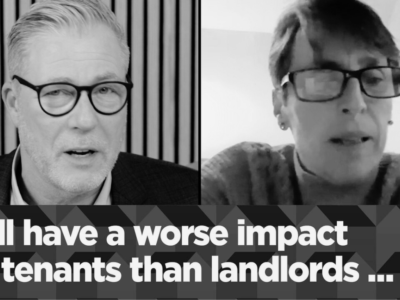The more you head North the higher the house price growth, as the UK’s Northern cities continue to attract interest from investors and tenants, Ascend Properties analysis has found.
Collectively prices increased by a huge 9.8% in the North annually to January 2021, compared to 6.6% in the Midlands and 6.4% in the South.
While prices are on the up in the North, it’s still relatively affordable for investors and owner-occupiers alike.
Property prices average at £167,211 across the Northern regions, which is less than half the typical price in the South (357,257).
The North West (12.0%) has seen the steepest house price inflation, bringing prices to a typical £184,234, while the Yorkshire and the Humber (8.9% £179,248) and the North East (8.5% £138,151) aren’t far behind.
An East-West divide
Curiously, there also appears to be an East-West divide developing in England.
The East Midlands (7.6%) outperformed every area in the South in terms of price growth, while the West Midlands saw the lowest growth in the country (4.7%).
A number of people have moved out of the largest cities in search of green space due to the pandemic, which perhaps explains why the West Midlands, containing the UK’s ‘second city’ in Birmingham, is lagging behind.
There’s a similar trend in London, which recorded the second lowest growth (5.3%) in England.
Rental yields strongest up North – despite slipping annually
Rental yields averaged at 5.2% in the North of England, compared to 4.1% in the Midlands and 3.8% in the South.
Although strong rental growth in the region means rental yields have declined marginally year on year, the area remains the best bet for landlords, with the UK’s best rental yields found in Yorkshire and the Humber, at 6.0%.
Managing Director of Ascend Properties, Ged McPartlin, commented:
“The North of England has long been where investors can get bang for their buck, and the study certifies why.”
“Stronger rental yields, affordable prices for buyers and renters alike, as well as rising prices, make the region a hotbed of activity.”
“The only surprise is that yields have fallen in the North, though if prices continue to rise in those regions that should dwarf a small decrease in yearly income.”
“We’re pleased the so-called Northern Powerhouse appears to be becoming a reality, as more people seek to live and work in more affordable areas of England.”
| Table shows the current average house price and annual change across the North, Midlands and South of England | |||||
| Region | Location | AveHP | Regional Average | AveHP change % | Average change |
| North | North East | £138,151 | £167,211 | 8.5% | 9.8% |
| North | North West | £184,234 | 12.0% | ||
| North | Yorkshire and the Humber | £179,248 | 8.9% | ||
| Midlands | East Midlands | £209,927 | £210,190 | 7.6% | 6.6% |
| Midlands | West Midlands region | £210,454 | 4.7% | ||
| South | East of England | £310,639 | £357,257 | 7.5% | 6.4% |
| South | London | £501,320 | 5.3% | ||
| South | South East | £342,420 | 6.4% | ||
| South | South West | £274,648 | 6.7% | ||
| Table shows the current average rent and annual change across the North, Midlands and South of England | |||||
| Region | Location | Average Rent | Regional Average | Annual Rental Growth | Average change |
| North | North East | £540 | £665 | 0.0% | 2.0% |
| North | North West | £775 | 1.4% | ||
| North | Yorkshire and the Humber | £680 | 4.5% | ||
| Midlands | East Midlands | £698 | £720 | 6.4% | 6.8% |
| Midlands | West Midlands region | £741 | 6.0% | ||
| South | East of England | £979 | £1,139 | 7.9% | 3.7% |
| South | London | £1,563 | -3.9% | ||
| South | South East | £1,094 | 7.1% | ||
| South | South West | £919 | 8.0% | ||
| Table shows the current average rental yield and annual change across the North, Midlands and South of England | |||||
| Region | Location | Average Rent Yield | Regional Average | Annual Change | Average change |
| North | North East | 4.7% | 5.2% | -0.4% | -0.4% |
| North | North West | 5.0% | -0.5% | ||
| North | Yorkshire and the Humber | 6.0% | -0.2% | ||
| Midlands | East Midlands | 4.0% | 4.1% | 0.0% | 0.0% |
| Midlands | West Midlands region | 4.2% | 0.1% | ||
| South | East of England | 3.8% | 3.8% | 0.0% | -0.1% |
| South | London | 3.7% | -0.4% | ||
| South | South East | 3.8% | 0.0% | ||
| South | South West | 4.0% | 0.0% | ||

























Comments